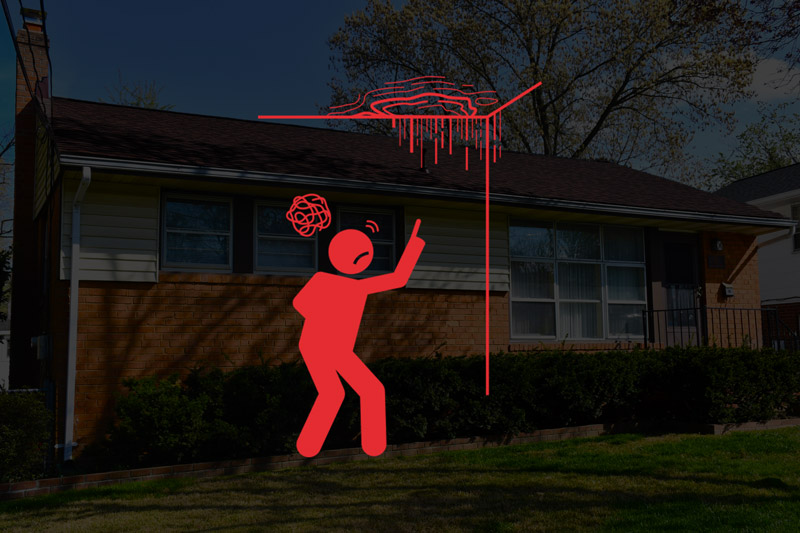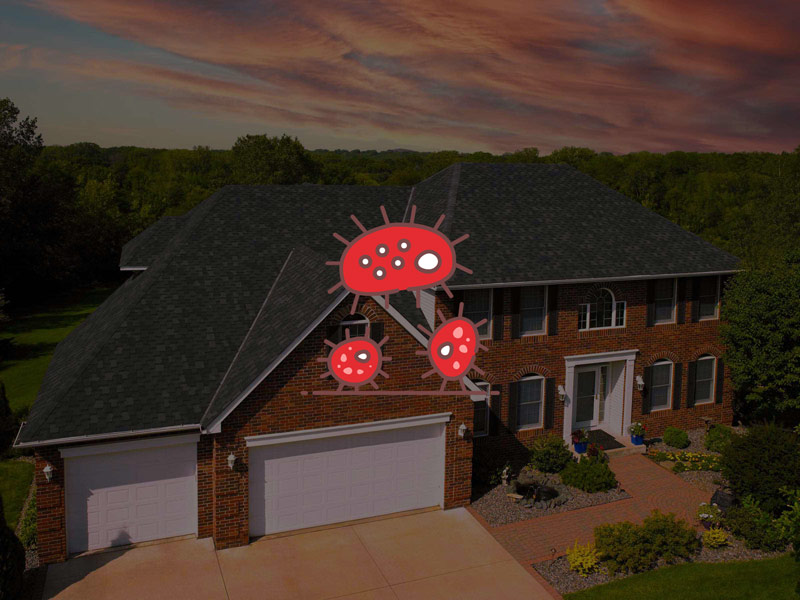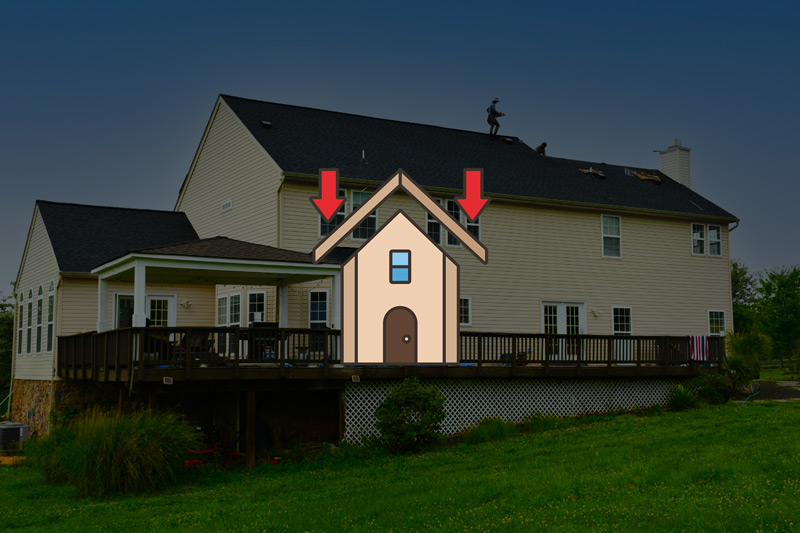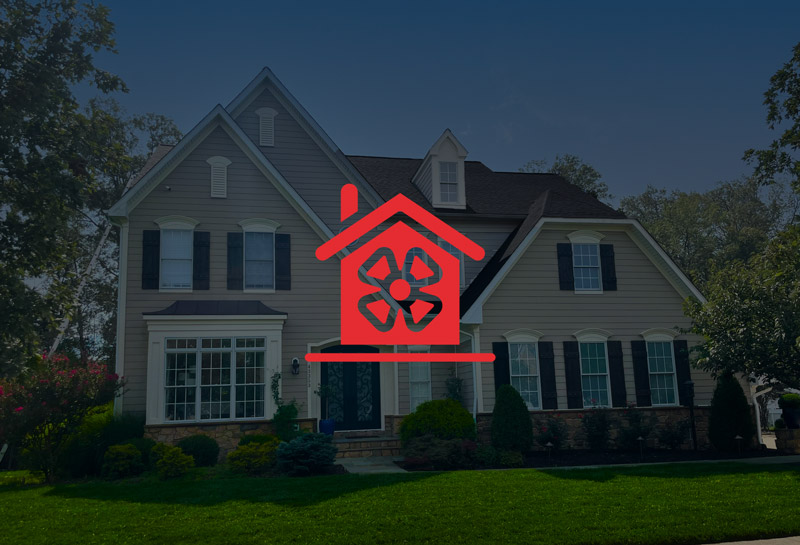Roof Water Damage Understanding the Impact and Prevention
Leaking roof water damage is a pressing issue that requires immediate attention. Ignoring or delaying repairs can lead to severe consequences for your home and its occupants. When left unattended, roof water damage can compromise the structural integrity of your property, leading to more extensive and costly repairs in the future.

Identifying Leaking Roof Water Damage
When it comes to roof water damage, it’s crucial to be able to identify the signs and symptoms indicating a leak. By recognizing these indicators early on, you can take appropriate action to prevent further damage. Here are some common signs to watch out for:
- Water Stains and Discoloration on Ceilings and Walls: Look for yellowish-brown stains or discoloration on your ceilings and walls, especially in areas directly below the roof. These stains are often an indication that water is infiltrating through the roof and seeping into your home.
- Damp or Musty Odor in the Affected Areas: If you notice a persistent damp or musty smell in specific areas of your home, particularly near the roof, it could be a sign of hidden roof water damage. This odor is often caused by the growth of mold or mildew resulting from excessive moisture.
- Peeling Paint or Wallpaper: Moisture from a leaking roof can cause paint or wallpaper to peel or bubble. This occurs when water infiltrates the walls and disrupts the adhesion of the paint or wallpaper to the surface.
Conducting a Thorough Roof Inspection to Pinpoint the Source of the Leak
To effectively address roof water damage, it is essential to pinpoint the exact source of the leak. Conducting a thorough roof inspection can help you identify the areas that require immediate attention. Here’s what you should look for:
- Checking for Damaged or Missing Shingles: Inspect the roof surface for any signs of damaged or missing shingles. Cracked, curling, or deteriorating shingles can create vulnerabilities that allow water to penetrate the roof.
- Examining Flashing and Seals around Chimneys, Vents, and Skylights: Check the flashing, which is the metal or rubber material installed to prevent water penetration around chimneys, vents, and skylights. Ensure that it is intact and properly sealed, as damaged flashing can contribute to roof leaks.
- Inspecting Gutters and Downspouts for Clogs or Damage: Clean and inspect your gutters and downspouts regularly to prevent water backup. Clogged or damaged gutters can cause water to overflow and seep into the roof, leading to water damage.

Understanding the Consequences of Roof Water Damage
Structural Damage to the Roof and Underlying Components
When roof water damage is left unaddressed, it can lead to significant structural issues. The continuous presence of moisture can weaken various roof materials, including wood and metal, leading to long-term damage. Wood rot may occur, compromising the integrity of the roof’s framework, while metal corrosion can weaken metal components, such as flashing or fasteners. Over time, these structural weaknesses can escalate, potentially resulting in a roof collapse if not remedied in a timely manner.
Mold and Mildew Growth
One of the most concerning consequences of roof water damage is the growth of mold and mildew. Excessive moisture provides an ideal environment for these organisms to thrive, particularly in dark and poorly ventilated spaces. The presence of mold and mildew poses several risks:
- Health Risks Associated with Indoor Mold Infestation: Exposure to mold spores can trigger various health issues, particularly for individuals with allergies, asthma, or compromised immune systems. Symptoms may include respiratory problems, nasal congestion, coughing, sneezing, and eye irritation. Additionally, certain types of mold, such as black mold (Stachybotrys chartarum), can produce mycotoxins that can lead to more severe health problems.
- Damage to Personal Belongings and Furnishings: Mold growth can spread to personal belongings, furniture, and other household items, causing irreversible damage. Fabrics, papers, books, and even electronic equipment can fall victim to mold infestation, leading to staining, warping, and decay.

Remedies for Roof Water Damage
When faced with roof water damage, it’s essential to take immediate action to prevent further deterioration. Here are some temporary measures you can take:
- Placing Buckets or Tarps to Catch and Divert Water: Position buckets strategically to catch dripping water and prevent it from damaging your property. Additionally, consider using tarps to cover areas prone to leaks temporarily.
- Clearing Debris from Gutters and Downspouts: Remove any debris, such as leaves or branches, from your gutters and downspouts. This helps ensure proper water flow and prevents clogs that can contribute to roof leaks.
Repairing or Replacing Damaged Roofing Materials
To effectively address roof water damage, damaged roofing materials must be repaired or replaced. Consider the following actions:
- Patching or Replacing Missing or Damaged Shingles: Inspect your roof for missing or damaged shingles. Replace any compromised shingles or apply appropriate patches to prevent water intrusion.
- Re-sealing Flashing and Seals around Penetrations: Check the condition of flashing, which protects vulnerable areas like chimneys, vents, and skylights. Ensure proper sealing to prevent water from seeping through gaps or deteriorated seals.
Addressing Underlying Structural Issues
It’s crucial to address any underlying structural issues caused by roof water damage. Consider the following steps:
- Reinforcing Weakened Supports or Trusses: If the water damage has compromised the supports or trusses of your roof, consult a professional contractor to reinforce these areas adequately.
- Repairing Damaged Roof Decking or Rafters: Identify any damaged roof decking or rafters and have them repaired or replaced as necessary to restore the structural integrity of your roof.
Mold Remediation and Prevention
To mitigate the risk of mold growth and ensure a healthy living environment, take the following measures:
- Identifying and Removing Affected Materials: Thoroughly inspect your home for signs of mold growth. If mold is present, consult with a professional mold remediation specialist to safely remove the affected materials and mitigate further contamination.
- Enhancing Ventilation and Moisture Control: Improve ventilation in your attic and other affected areas to minimize moisture buildup. Consider installing vents or fans and utilizing dehumidifiers to maintain optimal humidity levels and prevent mold growth.

Preventing Future Roof Water Damage
To prevent future roof water damage, it’s crucial to prioritize regular maintenance and inspections. Consider the following practices:
- Clearing Debris and Keeping Gutters Clean: Regularly remove debris, such as leaves, branches, and dirt, from your roof and gutters. Clogged gutters can lead to water overflow, causing potential damage to the roof and its underlying components.
- Monitoring and Addressing Early Signs of Damage: Stay vigilant for early signs of roof damage, such as missing or damaged shingles, cracked flashing, or deteriorating seals. Promptly address these issues to prevent water intrusion and potential water damage.
Enhancing Attic Insulation and Ventilation
Improving attic insulation and ventilation plays a crucial role in preventing roof water damage. Consider the following steps:
- Improving Airflow to Prevent Moisture Buildup: Ensure proper ventilation in your attic by installing vents, exhaust fans, or a ridge vent. Proper airflow helps to remove excess moisture and prevent condensation, which can contribute to roof water damage.
- Ensuring Proper Insulation to Regulate Temperature: Adequate insulation helps regulate the temperature in your attic, preventing ice dams and potential water leaks. Inspect your attic insulation and consider adding more if necessary to maintain optimal temperature levels.
View More Articles
Please Share!











